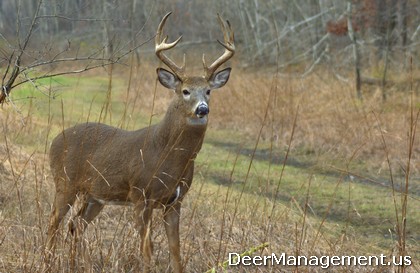Question: “I have land for deer hunting in Eastern Kansas. I want to grow bigger bucks, but I know that I have several full-rack whitetail bucks that I have seen this hunting season with missing brow tines. Should I remove these deer from my herd? In addition, I am also seeing quite a few spikes, most of them with spikes that are more than 10 inches in length, with decent mass too. Should these bucks be taken or will they grow to be larger bucks in the future? Any deer management info for this situation would be appreciated.”
Response: If you want to produce and grow bigger bucks, then I suggest learning as much as you can about deer management techniques. Manipulation of habitat and selective deer harvest can help by improving age and modifying genetics. Of course, property size is important in how much you can do for the deer in your area. The more property you have, the more you can do to help the animals in your area.

My first recommendation is to learn to age deer on the hoof. It really helps to judge a buck by his head gear based on his age. Bucks with missing brow tines should be candidates for harvest. This also goes for spikes, especially if they are 2.5 years of age or older. Most spikes are yearling bucks (1.5 years of age), and can be shot to allow the best bucks to grow and reproduce. Shooting spikes will decrease the number of bucks that reach maturity though. You must decide if you want to allow the best bucks to grow, or simply just have more mature deer.
Antler characteristics are based on genetics, so what you see is what you get. Young bucks with better than average antlers will grow up to be much better deer than say two or four point yearling bucks. Land owners that want to grow bigger bucks must manage for age, genetics and nutrition. Keep the deer numbers and the appropriate level for your habitat and that will help the bucks on your property reach their genetic potential. Selective deer hunting is just one part of the equation, but no important than the other two elements.